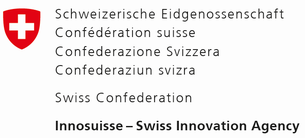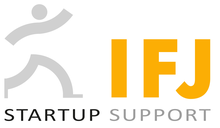
No Lack of innovation, but of bridge funding
While Switzerland is not short of innovation, it falls short in commercializing it as seen in the lack of available capital in the product-to-market phase. “Start-ups frequently overestimate their capacity to raise funds, especially seed and early-stage funds”, says Jean-Marc Soustre, coordinator of a CTI Start-up task force engaged in studying ways of improvement. And he adds: “Although financial opportunities exist, young entrepreneurs of the CTI coaching program are often falsely under the impression that this money will come from venture capitalists and banks. However, these groups are essentially only interested after a company has a proven track record”.
While the few best start-ups likely to become “high flyers” (scalable due to large market potential) get financed quickly, access to finance is critical and gets longer in Europe and Switzerland. Unlike US VCs who always have and still do finance in the early stages, EU VCs have shifted to even later stage invest-ments, particularly the larger ones. Although certain smaller investors still do support early stage ventures their capacity and proportional impact is limited. This leads to waste of time in financing, even prolonging time to market and loosing compe-titive edge. So where to turn for the seed or bridge financing so critical to this development stage?
Bootstrapping
In order to focus on the seed and early stage phase - i.e. sources of funding available before venture capitalists or traditional banking instruments can come in - it is necessary to identify additional sources of finances (equity-based or debt-based) going beyond the initial FFF support (Family, Friends, & Fools).
“Bootstrapping a company with non-dilutive funding, i.e. from private foundations or public sources, is a way to create initial value and focus on the minimum viable product. Some also successfully sell their consulting or other activity related services such as clinical trial design to generate cash inflow while establishing at the same time contacts with future customers. Although not conventional for every business, bootstrapping does build great companies!”, points out Faris Sabeti, Vice President at CTI, responsible for CTI Start-up.
Typical bottleneck
Up to the first million and a half Swiss Francs established SMEs succeed to bankroll R&D and prototyping mostly through public organizations (CTI Projects & Promotion) or private financial institutions. “Some entrepreneurs, on the other hand, rather have to turn to business angels or tap into seed funding sources from foundations and private-public organizations. The gap comes right after this stage when companies look to finance the industrialization and prepare for commercialization,” Faris Sabeti further explains.
A not-to-be-underestimated source of funds
Yet, everything is not doom and gloom: Compared to most other countries, there are significant cash pools available in Switzerland. ”Foundations and public-private institutions and their array of awards are a valuable source of seed and early-stage money”, comments Pascal Dutheil, CTI Start-up ICT coach.
Zeeder - Funding ICT start-ups in particular
Having been confronted with the challenge themselves in not so remote times, Michael Näf, Co-founder of Doodle and Luzius Meisser, Co-founder of Wuala, two successful CTI Start-up Label companies, recently created together with Thomas Dübendorfer, Google, and Eric Schmid, Elevate Partners, the private investor’s network Zeeder.
“Our initiative is focussing on ICT ventures only”, clarifies Michael Näf. “On top of financial means, Zeeder believes that specific first-hand experience and an industry network are critical advantages for the launch of new ICT projects”.
When asked what the specific challenges with respect to securing seed financing for Swiss ICT start-ups are, Näf makes the following analysis: “Unlike in the United States where investors’ top evaluation criteria are the capacity to rapidly implement an idea and to penetrate a market, in Switzerland they focus too much on IP rights and rapid cash-flow generation. The glitch in that thinking is that Internet ideas are often difficult to protect and the first to be on the market sets the trend and the standard”.
Questioned about later stage financing difficulties for web based projects, Näf comments that “Switzerland is lacking globally thinking VCs and although the number of ICT ventures has increased during the last years (also see CTI Start-up Quarterly Findings I, May 2012), we are missing large venture funds to cover their needs.”
























































Please login or sign up to comment.
Commenting guidelines